If you live in Massachusetts, Hawaii, and New Hampshire, you win a kind of state lottery for public health and well-being, based on this year’s read of the 2023 Scorecard on State Health System Performance from The Commonwealth Fund.
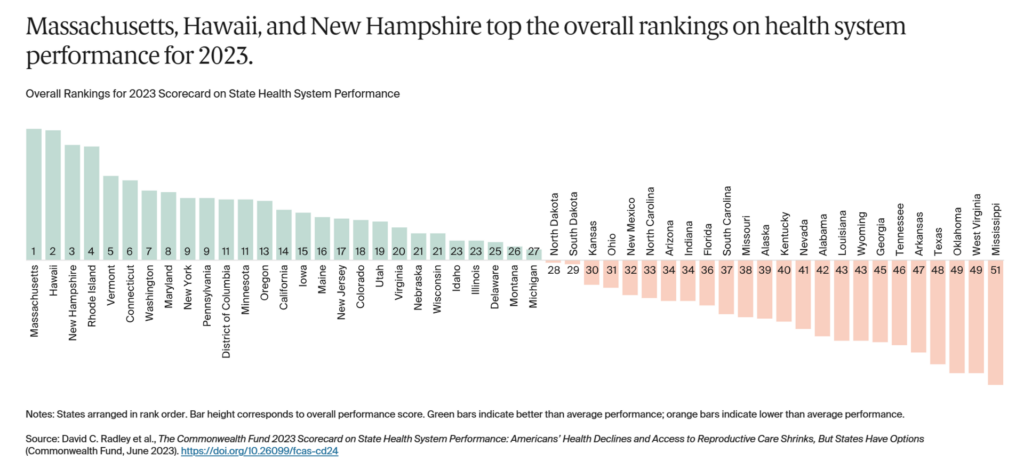
Here’s a picture of the annual study’s top-line findings, a roster of the fifty U.S. states ranked by a mash-up of health system indicators.
As Annie Burkey of FierceHealthcare succinctly summed it up, the “Commonwealth Fund gives healthcare in southeastern states failing grades across the board.” I’ll give you more details about the Top and Bottom 10 below — first, some over-arching context.
The Commonwealth Fund’s- methodology covered,
- Access and affordability
- Prevention and treatment
- Avoidable use and cost
- Healthy lives
- Reproductive care and women’s health
- Income disparity, and
- Racial and ethnic equity.
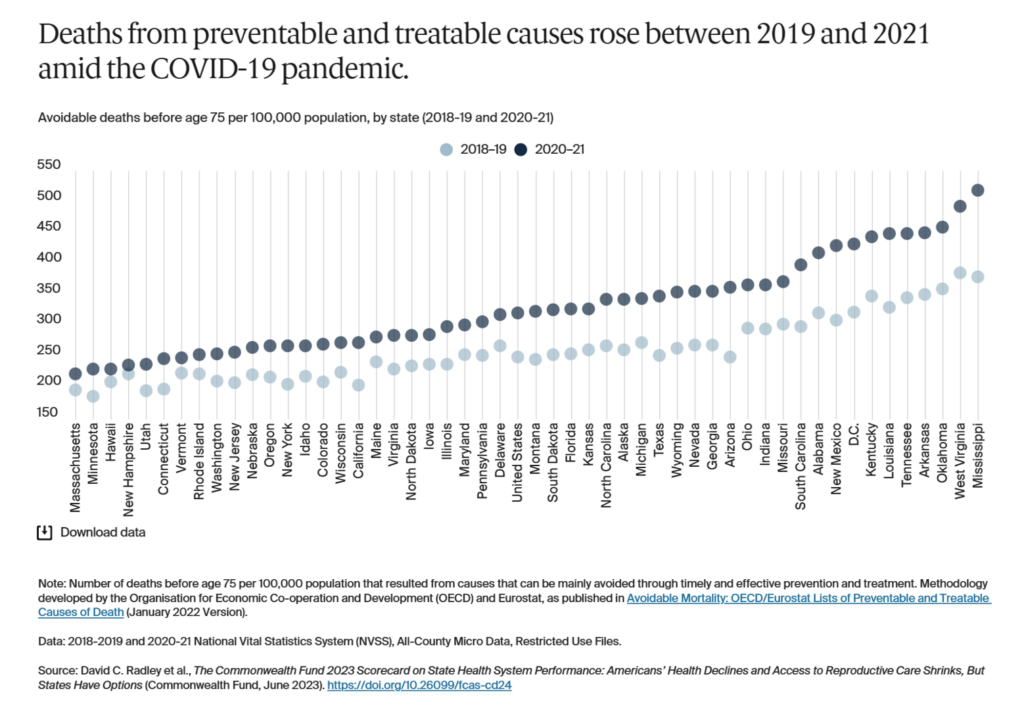
A critical insight that’s quite clear from this chart from the report is that deaths from preventable and treatable causes substantially rose especially in certain states between 2019 and 2021 in the thick of the COVID-19 pandemic. At the right of the chart, we see Mississippi with the biggest gap in avoidable deaths pre- and post-pandemic, followed by West Virginia, Oklahoma, Arkansas, Tennessee, Louisiana, Kentucky, Washington DC, New Mexico, and Alabama.
Seven of these fall into the bottom 10 states of health system performance (the other three being Nevada, Wyoming, and Texas). 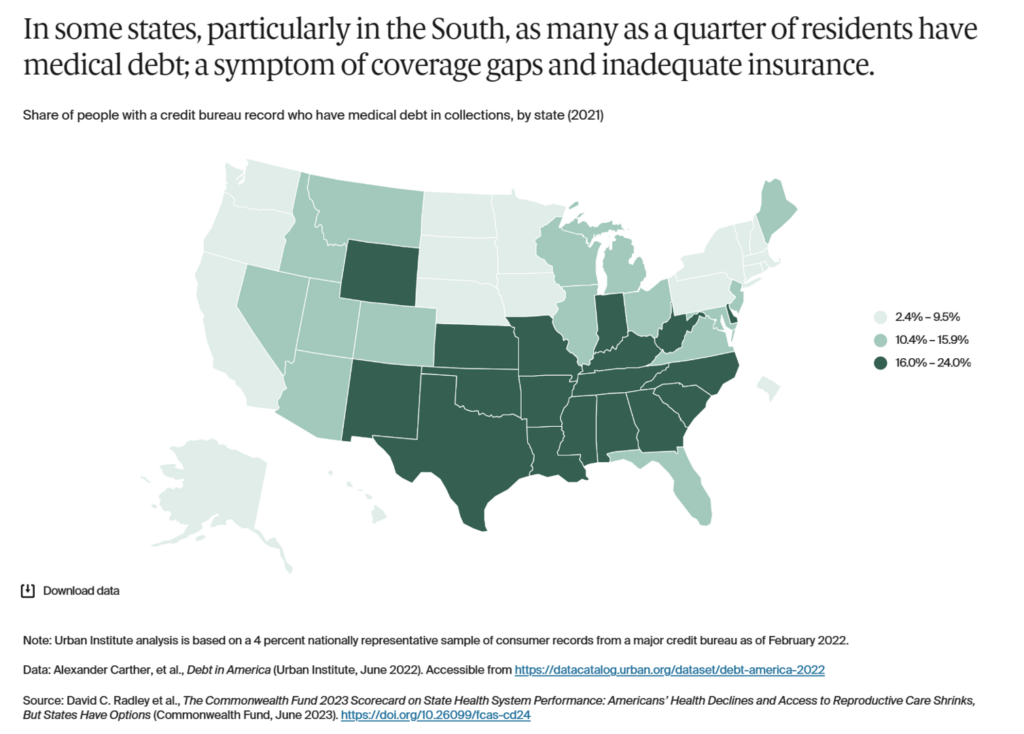
Financial well-being is another key driver of personal health, and so this map of states featuring those with higher levels of medical debt is instructive — echoing other maps for risks to social determinants of health factors. Here, too, medical debt tends to be greater in southern U.S. states.
Note that in the Commonwealth Fund’s calculations, access and affordability is a key factor contributing to health system performance. And, a major input into access and affordability is having health insurance coverage.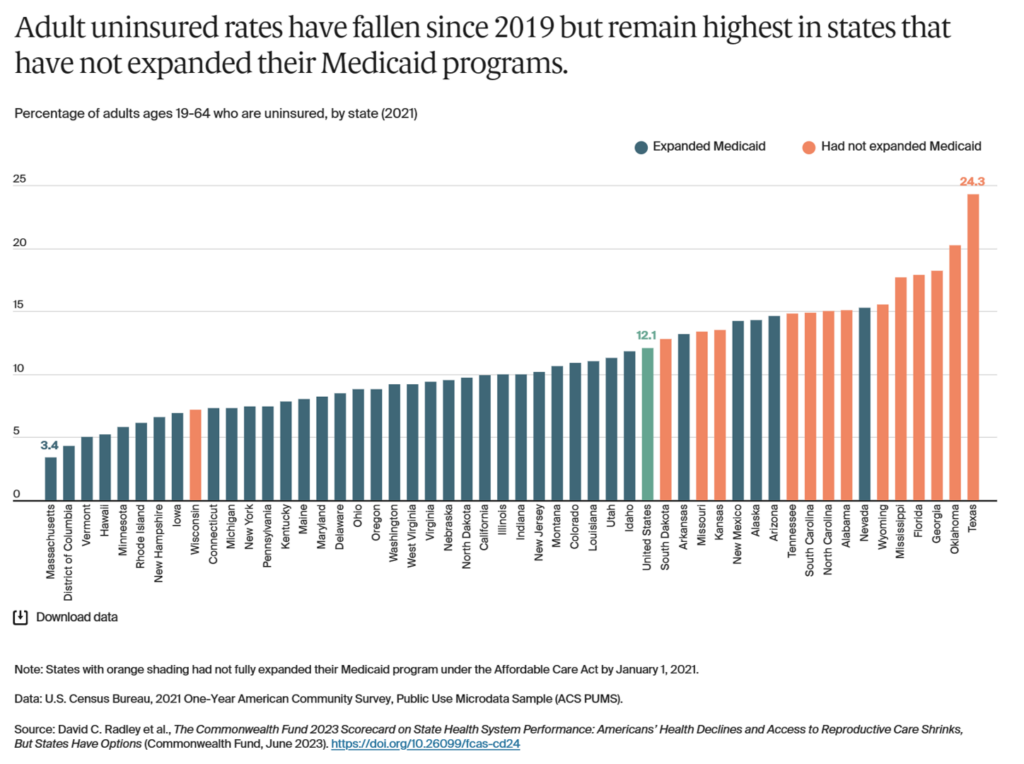
This bar chart illustrates that U.S. adults rate of uninsurance are highest in the states where Governors did not expand Medicaid, which are states indicated by the orange bars. Here, the bottom ten are Texas, Oklahoma, Georgia, Florida, Mississippi, Wyoming, Nevada, Alabama, North Carolina, and South Carolina, with Nevada being the only state among the bottom 10 that had expanded Medicaid coverage for its health citizens.
Among other factors contributing to some U.S. health citizens faring better for health and well-being than others, check out this map which indicates the states where many women did not receive early prenatal care relative to women residing in states where prenatal care was more accessible and/or available.
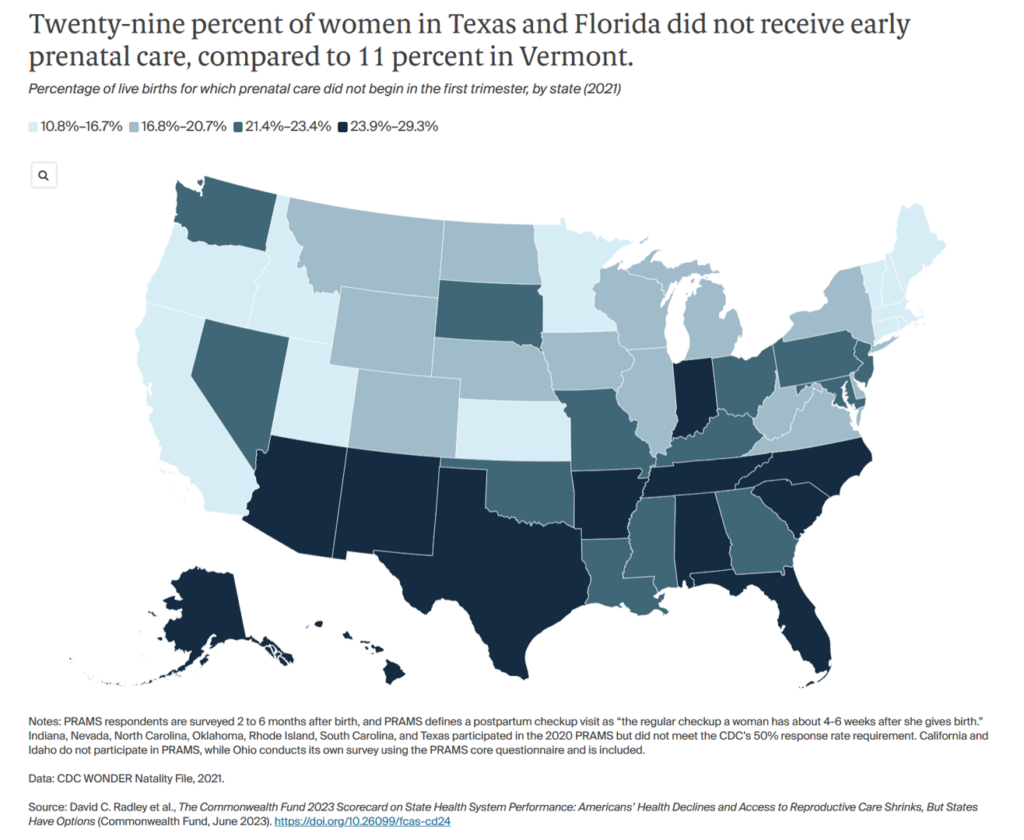
This 2023 Scorecard of health system performance added a new metric to the analysis — Reproductive Care and Women’s Health. This domain encompasses health outcomes and access.
In fact, health system performance for women, children and infants varies state-by-state, “with large differences in avoidable mortality and access to important health services,” the report observes.
“Women faced particularly severe challenges during the COVID-19 pandemic. These included delays in getting health care and pregnancy complications stemming from the virus,” with women of color particularly affected exacerbating racial and ethnic disparities in health outcomes, the Fund asserts.
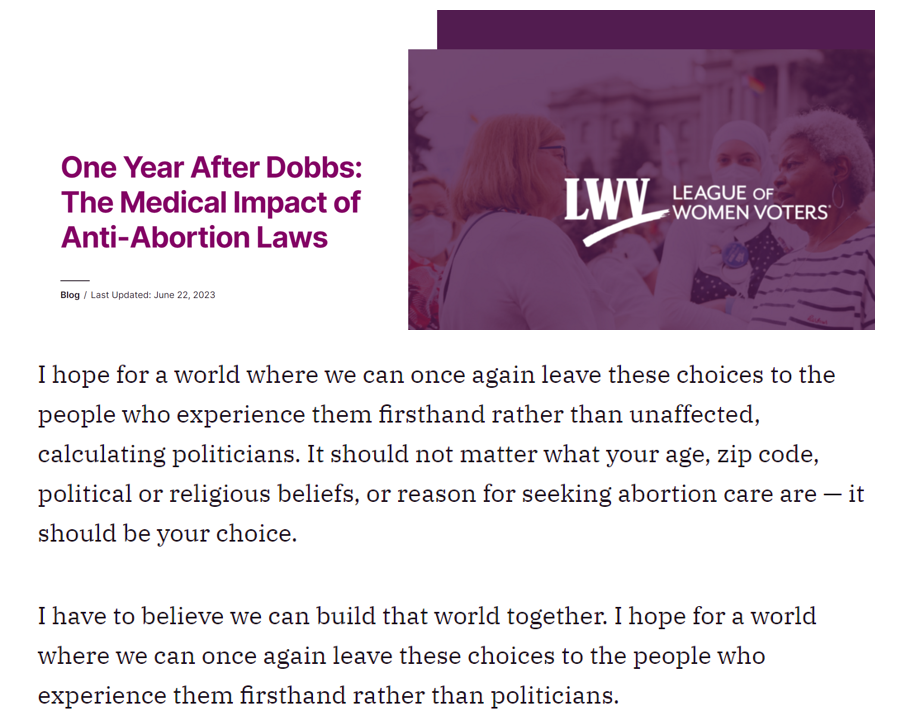
Health Populi’s Hot Points: “Inadequate access to health services during and after pregnancy, combined with disparities in socioeconomic status, underlying health, and quality of care, have helped drive a U.S. maternal mortality rate that is nearly twice as high as rates in other high-income countries,” the Commonwealth Fund explains.
This day marks the one-year anniversary of the overturn of Roe v. Wade (aka the Dobbs Decision).
I link to the League of Women Voters’ website, an organization I support and learn from; both my mother and mother-in-law were members of LWV, exercising their own political muscles at a quite different socio-political moment in time.
LWV recognizes this anniversary saying, “I hope for a world where we can once again leave these choices to people who experience them firsthand….it should not matter what your age, zip code, political or religious beliefs.”
Women’s health care is health care. Women’s rights are human rights. And ensuring these improves health system performance and, indeed, health outcomes for women and children.


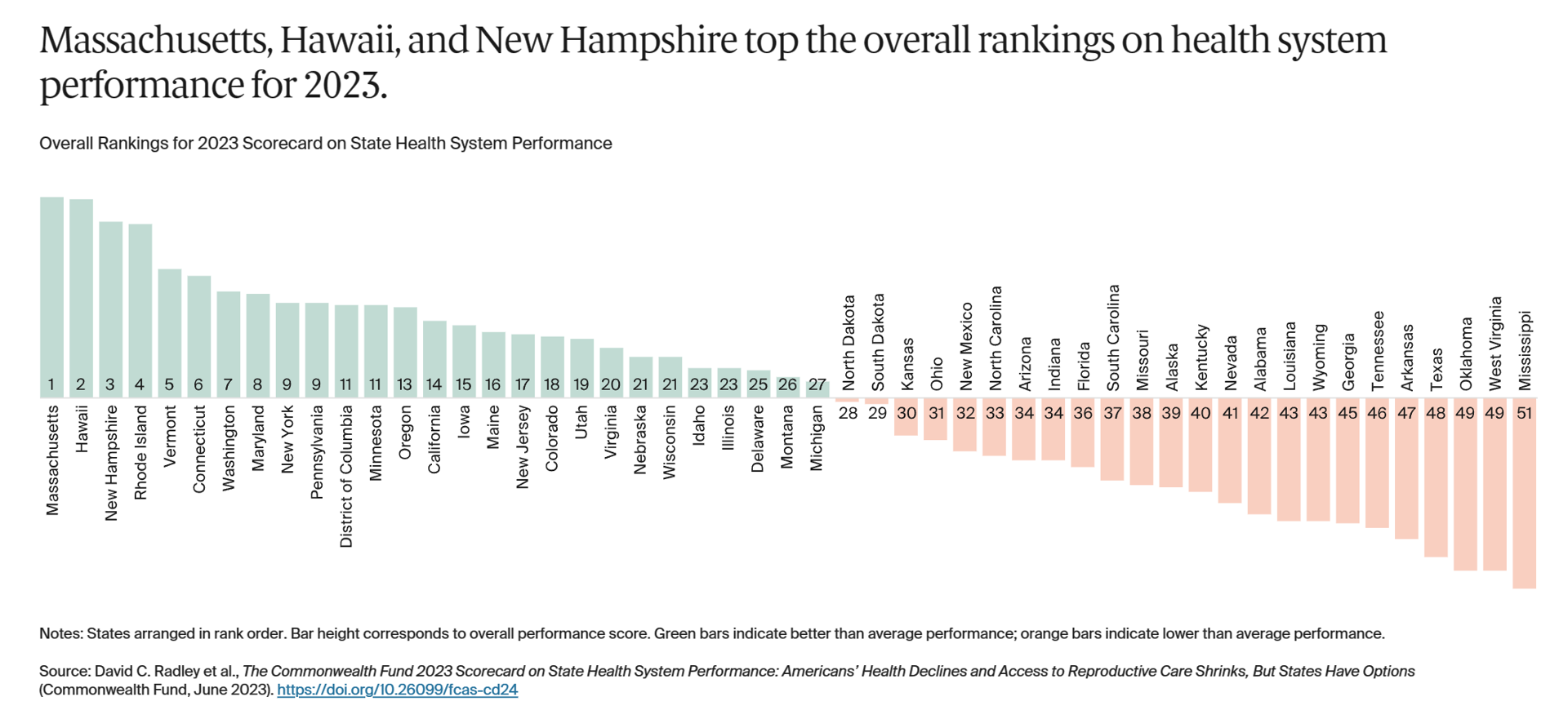


 I'm in amazing company here with other #digitalhealth innovators, thinkers and doers. Thank you to Cristian Cortez Fernandez and Zallud for this recognition; I'm grateful.
I'm in amazing company here with other #digitalhealth innovators, thinkers and doers. Thank you to Cristian Cortez Fernandez and Zallud for this recognition; I'm grateful. Jane was named as a member of the AHIP 2024 Advisory Board, joining some valued colleagues to prepare for the challenges and opportunities facing health plans, systems, and other industry stakeholders.
Jane was named as a member of the AHIP 2024 Advisory Board, joining some valued colleagues to prepare for the challenges and opportunities facing health plans, systems, and other industry stakeholders.  Join Jane at AHIP's annual meeting in Las Vegas: I'll be speaking, moderating a panel, and providing thought leadership on health consumers and bolstering equity, empowerment, and self-care.
Join Jane at AHIP's annual meeting in Las Vegas: I'll be speaking, moderating a panel, and providing thought leadership on health consumers and bolstering equity, empowerment, and self-care.